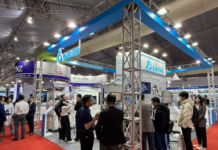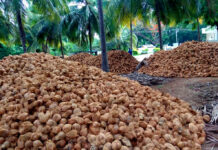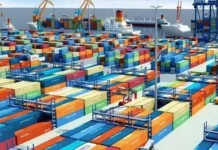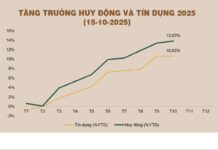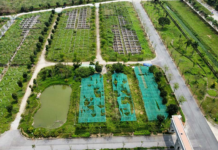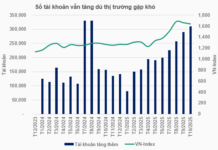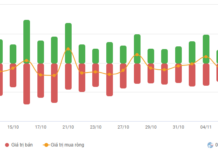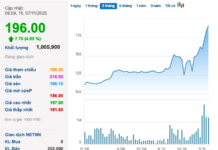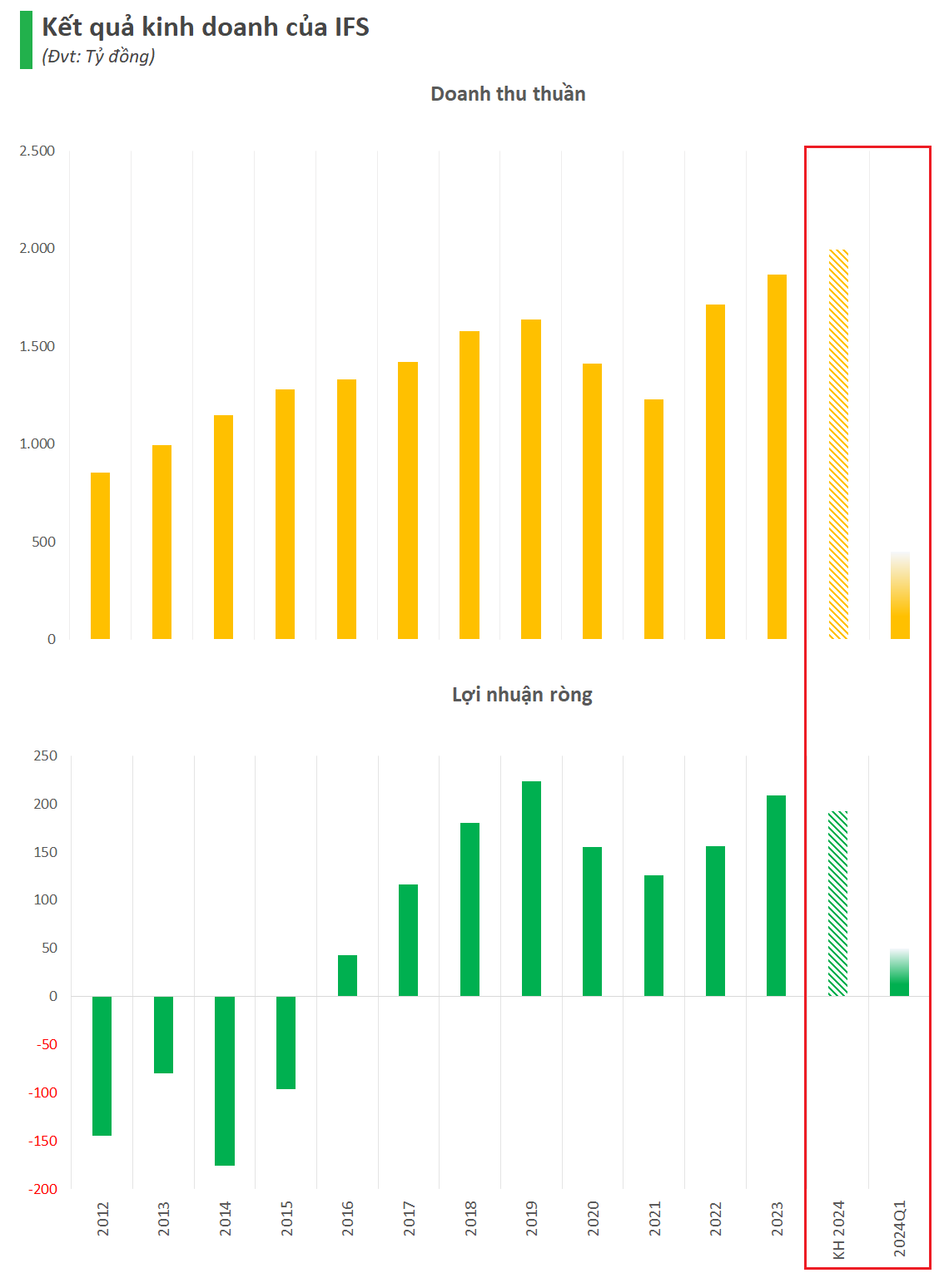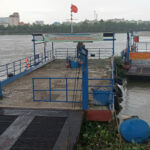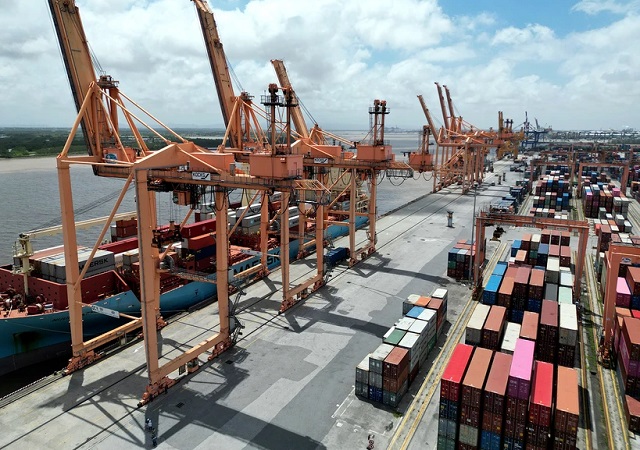
|
Logistics plays a crucial role in boosting import and export activities. (Photo: Duc Duy/Vietnam+)
|
The logistics industry, including transportation and warehousing, is of utmost importance in creating a competitive advantage for each country, especially in the field of import and export. However, the underdeveloped and disconnected transport infrastructure results in logistics costs that are significantly higher than those of other countries in the region.
On the other hand, for the logistics industry, going “Green” is no longer a trend but a mandatory requirement for businesses. Therefore, logistics enterprises need to take advantage of this and turn greening into a driving force and urgent requirement to enhance their competitiveness, improve their brand image, and strive for more sustainable and comprehensive development in business, trade, and global import and export activities.
Untapped Potential
According to a report by the Ministry of Industry and Trade, Vietnam has many potentials and advantages in developing logistics services, such as its strategic location in the dynamic development region of the world, its rapidly growing economy, deep international integration, being the eighth most promising emerging market with high consumption, the strong development trend of e-commerce, being the new production center of the Asia-Pacific region, and having geographical advantages for international transport with a 3,260-km-long coastline, deep-water ports, international airports, a cross-country railway system, and a favorable transport network.
In 2023, Vietnam’s Logistics Performance Index (LPI) reached 3.3 points, ranking 43rd out of 154 countries and territories and fifth in the ASEAN region. The revenue growth rate of logistics services is quite high at 14%-16%/year, with a scale of about 40-42 billion USD/year. Many logistics enterprises have been established to provide services and gradually form a supply chain of goods and services to regions across the country and to countries in the region. The number of logistics enterprises is increasing rapidly, and large-scale logistics centers are also on the rise.
Despite these achievements, there are still certain limitations in Vietnam’s logistics service industry. The competitiveness remains low, with 89% of operating logistics enterprises being domestic enterprises, mainly small and medium-sized (accounting for 95%), but they only hold about 30% market share. Logistics costs are much higher than those of other countries in the world (equivalent to about 18% of GDP, while the world average is 14%), and their contribution to GDP is only 4%-5%.
Comparing logistics costs, especially for goods traded through e-commerce from China to Vietnam, shows a significant difference. According to Mr. Tran Thanh Hai, Deputy Director of the Import-Export Department (Ministry of Industry and Trade), China has clearly defined its goal of developing a goods supply chain along the borderlines. Therefore, when there are orders, transportation across the border, especially in the northern provinces of Vietnam, will be much more convenient.
Moreover, the large volume of orders from Chinese websites, along with the arrangement of goods sources in warehouses near the border with Vietnam, helps reduce the distance and time for delivering goods to Vietnam.
“This is a process that logistics enterprises, in general, and e-commerce enterprises, in particular, can refer to and study to improve their transaction processes, with the goal of bringing goods closer to customers and reducing costs and transportation time,” said Mr. Hai.
In reality, the shortcomings of the logistics sector in the past have had a significant impact on the competitiveness of Vietnamese goods. Especially, the issue of fees and surcharges (in addition to freight) at seaports has become a pressing problem for domestic enterprises.
Mr. Dao Trong Khoa, Vice Chairman of the Vietnam Logistics Service Enterprises Association (VLA), said that although the issue of fees and surcharges is not unique to Vietnam but a global issue and a concern of the world logistics federation, the expert emphasized the need for transparency in applying surcharges and suggested that it should be included in the perspective of state management to require enterprises to justify the appropriateness of the charges.
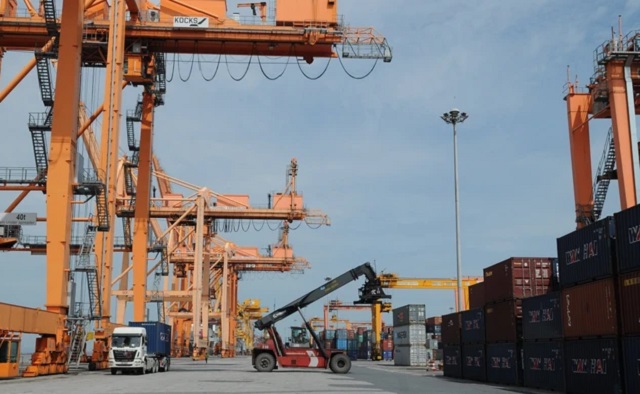
Citing the experience of the United States, Mr. Khoa said that when shipping lines applied congestion surcharges at ports, the US Maritime Administration would require shipping lines to explain and justify the reasonableness of such charges. “If the explanation is accepted, then it can be applied. This is a lesson for the units and authorities to study and apply,” said Mr. Dao Trong Khoa.
In addition, according to Mr. Ngo Khac Le from the Vietnam International Arbitration Center (VIAC), along with the involvement of state management agencies, shippers and enterprises need to have a stronger voice and closer connections to create a powerful force in making transparent the cost-related issues of shipping lines, thereby reducing costs and enhancing the competitiveness of goods.
Orientation towards Green Logistics
The current trend is that countries are applying Green standards to imported and exported goods. Therefore, for the logistics industry, going “Green” has become a mandatory requirement for businesses to participate in the supply chain of global producers and suppliers.
As evidence, according to Mr. Dao Trong Khoa, looking at the big picture, Green logistics will bring enormous benefits to the operations of enterprises. During the process of implementing Green logistics, enterprises will use more renewable energy, optimize their operations, thereby reducing operating costs, and especially when enterprises apply Green logistics, they will build a more professional image and be favored by customers.
“88% of customers tend to be loyal to environmentally friendly businesses. Therefore, when enterprises apply Green logistics in their strategy, they will, in the long run, increase their customer base, increase revenue, and reduce costs. Thus, implementing Green logistics is not a waste but will bring long-term benefits to enterprises,” emphasized Mr. Dao Trong Khoa.

|
PTSC’s service vessel. (Photo: PV/Vietnam+)
|
Regarding the Ministry of Industry and Trade, to promote the logistics sector, Mr. Tran Thanh Hai said that there needs to be unity among state management agencies, from central to local levels, among associations and supporting trade promotion organizations, and among enterprises and shippers.
“The most significant role of the Ministry of Industry and Trade is to create a macro-policy foundation for units and enterprises to implement together. Specifically, it is oriented towards a strategy for developing Green logistics as part of the overall strategy for logistics development, including important aspects such as Green logistics, Digital Transformation in logistics, and human resources training for the logistics industry. Therefore, this strategy also needs the coordination of other ministries and sectors, such as the Ministry of Transport, the Ministry of Natural Resources and Environment, and logistics associations,” said Mr. Tran Thanh Hai.
Currently, the Ministry of Industry and Trade is finalizing the draft Strategy for the Development of Vietnam’s Logistics Services. According to Deputy Minister Nguyen Sinh Nhat Tan, the question to be raised is how to increase the competitiveness of domestic enterprises so that they can capture the market share in this industry and thereby enhance the position of Vietnam’s logistics industry in its home market.
Duc Duy


